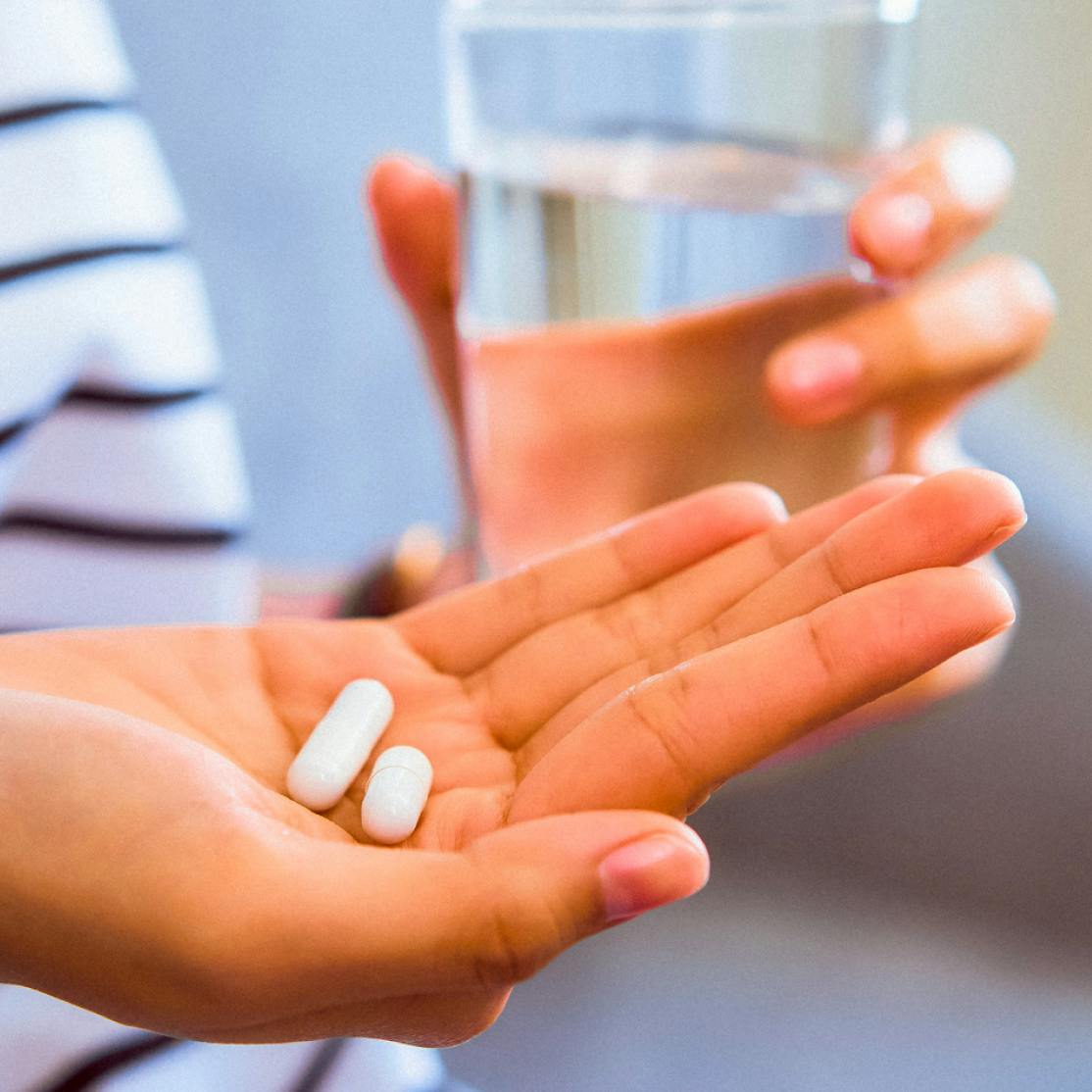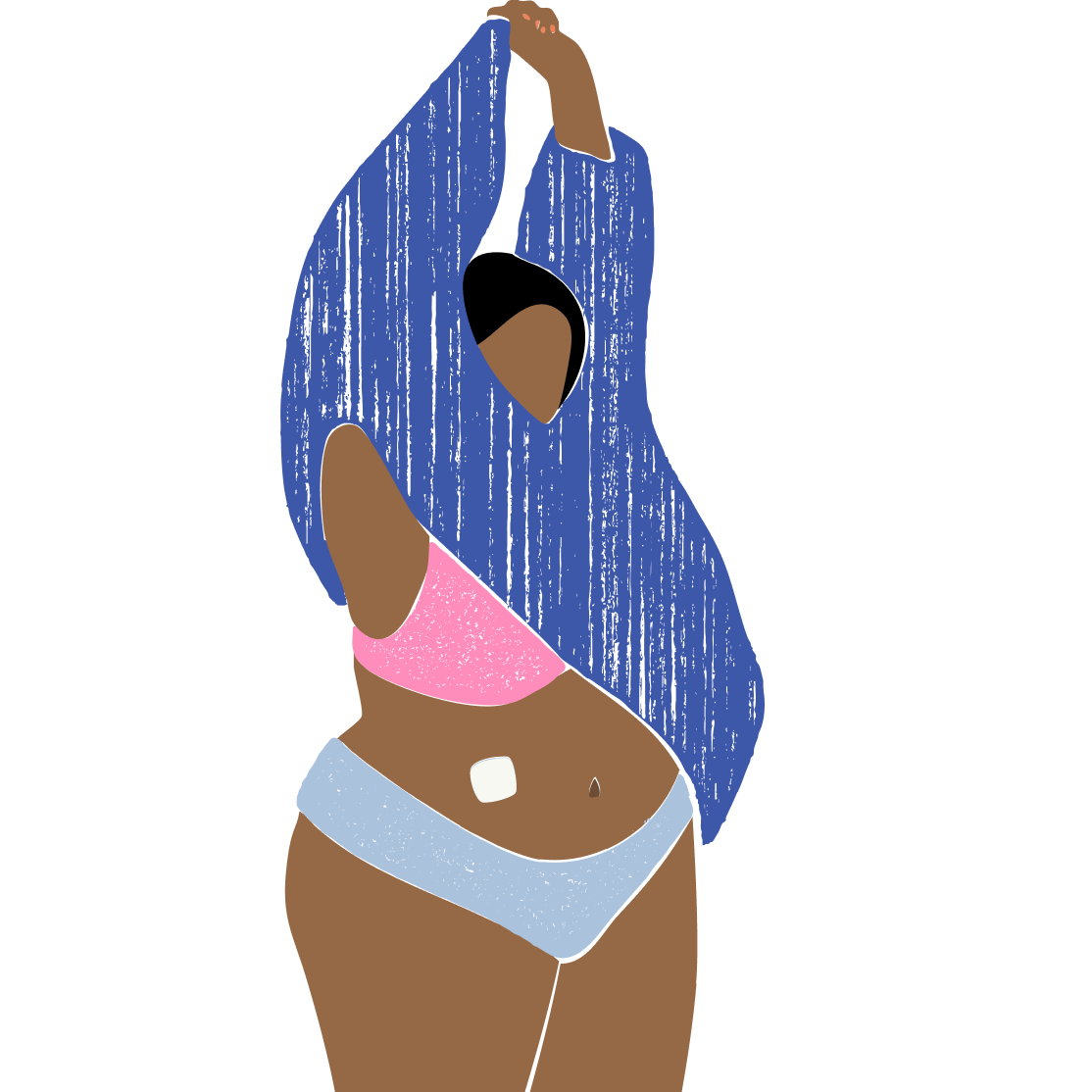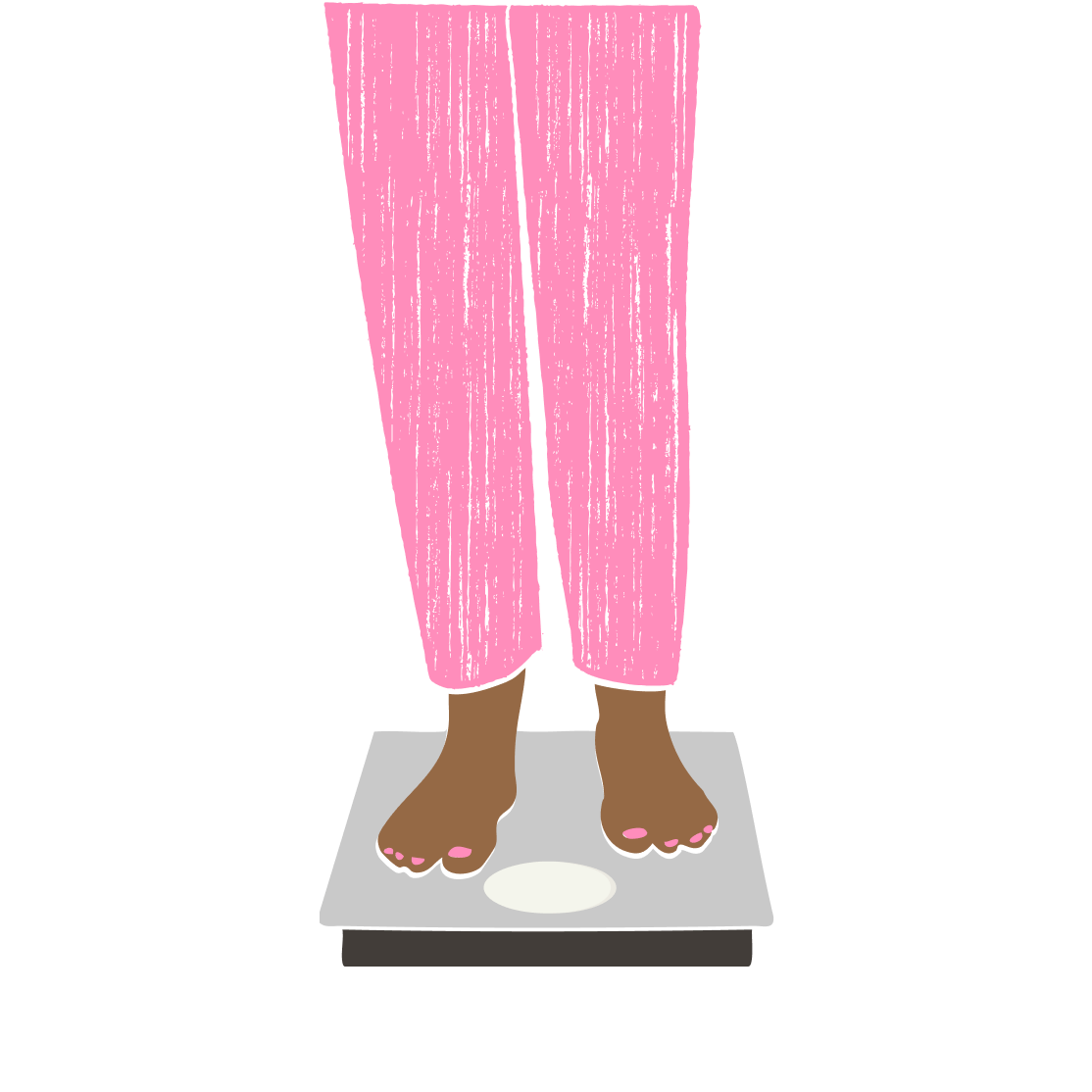There is some evidence that taking low-dose naltrexone may help ease some of the symptoms of perimenopause and menopause, such as autoimmune issues, chronic pain, inflammation, and mood disorders. Here’s what to know about the possible long-term benefits of this buzzy medication.
You might have been scrolling through social media when you stumbled across people talking about low-dose naltrexone (LDN) as an intriguing new option for dealing with some of those not-so-fun midlife symptoms. You know the ones—the mysterious aches and pains, the fatigue that won't quit, maybe some autoimmune weirdness that seems to have appeared out of nowhere.
While we're definitely not dealing with a mountain of research here, what we do have is pretty encouraging. Think of low-dose naltrexone as that promising new friend who might just turn out to be exactly what you need. Let's dive into what this medication is all about.
What Is Low-Dose Naltrexone (LDN)?
Naltrexone is a prescription medication that was originally developed to help combat opioid addiction. It’s also widely used to treat alcohol use disorder. But newer science has suggested that it could have many other benefits.
Typically, doctors prescribe this drug at around 50 to 100 milligrams (mg). But researchers discovered that when you dial that dose way down to just 1.5 to 4.5 mg, something pretty cool happens. This tiny amount seems to help with a whole bunch of other issues, especially the inflammatory and autoimmune stuff that can really ramp up during perimenopause and menopause.
For these purposes, doctors prescribe LDN off-label. Off-label means that a drug, like LDN, hasn’t been approved specifically for these uses by the Food and Drug Administration (FDA), but doctors can still prescribe it for things like fatigue and chronic pain. (As a bonus, it’s also inexpensive.)
“While LDN is not studied specifically for menopause, its anti-inflammatory and immune-modulating properties may address some inflammation-driven symptoms that become more noticeable during this life stage,” says Ava Mainieri, PhD, Director of Clinical Outcomes and Programming at Midi Health. “That’s because estrogen influences immune regulation. As estrogen declines during perimenopause and menopause, the immune system can shift toward a more proinflammatory state. This low-grade inflammation can worsen existing autoimmune disorders or unmask latent ones. It also contributes to joint pain, fatigue, and other ‘nonspecific’ midlife symptoms.”
How Does Low-Does Naltrexone Work?
This is where LDN gets clever. When you take naltrexone at its normal high dose, it basically puts up a "closed" sign on your opioid and endorphin receptors, which helps people in recovery by reducing cravings.
But at tiny doses, it’s like a gentle tap on the shoulder. LDN briefly blocks certain pain-related receptors linked to various causes of pain, which essentially gets your body thinking, "Oh no, we're not making enough of our natural feel-good chemicals!" So your body responds by cranking out more endorphins—your very own, built-in pain relievers.
“LDN appears to ‘trick’ the body into producing more of its own endorphins, which in turn modulates immune activity and pain signaling,” explains Dr. Mainieri. “It also reduces inflammatory signaling pathways and calms overactive immune cells in the central nervous system. Together, these mechanisms may reduce pain, improve mood, and regulate immune balance.”
Common Uses and Benefits of Low-Dose Naltrexone
The research varies from "pretty solid" to "really promising but we need more studies," but here's the lineup of a few of the conditions that LDN could help ease:
- autoimmune and Inflammatory conditions, such as rheumatoid arthritis, multiple sclerosis, inflammatory bowel disease, Hashimoto’s disease, and thyroid disorders
- unexplained inflammation that may be brought on by perimenopause or menopause
- chronic pain from conditions like fibromyalgia, neuropathic pain, and general inflammatory pain
- fatigue, including exhaustion tied to post-COVID fatigue syndrome
- mental health issues, like depression and PTSD
- skin conditions such as psoriasis, dermatomyositis, alopecia areata, and eczema
Proven Low-Dose Naltrexone Benefits, According to Research
Let's be real—we'd love to have more studies on LDN, especially for menopausal symptoms specifically. But what we do have is encouraging.
“There are no large, randomized controlled trials of LDN for menopausal symptoms specifically. The best-quality data come from small studies in inflammatory and pain-related conditions, fibromyalgia, Crohn’s disease, and multiple sclerosis—where benefits included reduced pain, improved energy, and better quality of life,” says Dr. Mainieri. “Many of these symptoms overlap with what women experience in midlife. The evidence base is still preliminary but promising.”
A big 2025 review looked at 68 different studies on LDN and found some pretty impressive results. People saw significant improvements in autoimmune and inflammatory diseases, including chronic pain conditions like arthritis, skin problems like psoriasis, digestive issues like Crohn's disease and ulcerative colitis, multiple sclerosis, chronic fatigue syndrome, and fibromyalgia. Even mood disorders, including depression, showed improvement.
Here are a couple of specific examples that might get your attention:
- In a small study of 10 women dealing with fibromyalgia and chronic pain, participants taking 4.5 mg of LDN daily for 14 weeks saw a 30% reduction in pain, fatigue, and stress, plus they slept better than participants taking a placebo.
- A 2011 trial of 40 women with Crohn's disease found that 80% of participants taking 4.5 mg of naltrexone daily for 12 weeks had less severe symptoms, and 33% actually achieved remission. Even better, 78% showed reduced inflammation and actual healing in their intestinal lining.
Potential Side Effects and Precautions
The good news about LDN is that the side effects tend to be very minimal, if any, for most women. In fact, in a study in the journal Clinical Rheumatology, participants reported LDN to be slightly more tolerable compared with a placebo. The researchers noted that the most common side effect was vivid dreams—which 37% of people reported, particularly after first starting the medication. However, these dreams decreased over time.
Dr. Mainieri says that overall, LDN is a low-risk tool for women experiencing certain chronic or hormone-related symptoms.
Your healthcare professional will probably start at a really low dose and gradually increase it based on how well symptoms improve.
You should not take LDN if you take opioids or have an opioid addiction. It can also interact with some cough syrups and pain relievers by blunting or blocking the effects of the analgesia, says Dr. Mainieri. Plus, there are some "theoretical" interactions with medications such as warfarin and diazepam—which you may come across online. But she adds that these interactions are usually based on standard doses of naltrexone and not on LDN: “In published LDN studies, concurrent use with most nonopioid medications has been well tolerated.”
Still, definitely tell your healthcare professional about everything you're taking—medications, supplements, even that random herbal tea you drink—before starting LDN.
Can I Just Stop Taking Low-Dose Naltrexone?
The short answer? Technically, yes. There haven't been any withdrawal symptoms reported when people stop taking LDN. But—and this is important—definitely chat with your healthcare professional before stopping or changing your dose. Since the research on LDN is still growing, it's always smart to play it safe and get professional guidance.
How to Get Started with LDN Medication
If LDN sounds like it might be worth exploring, find a healthcare professional who actually knows about it (not all do!). The team at Midi is familiar with LDN, which makes a huge difference in figuring out whether it could work for you.
Typical doses of LDN range from 1 to 5 mg, but they tend to land within the 1.5- to 4.5-mg range. Often clinicians will start with an even lower dose of 0.5 mg, and gradually work up from there based on how well you tolerate and respond to the medication, according to Dr. Mainieri.
Here's one quirky thing: Regular pharmacies stock only 50-mg naltrexone tablets, so LDN has to be made at a special compounding pharmacy.
Key Takeaways
- LDN is a safe and inexpensive option for women in midlife experiencing symptoms such as inflammation, autoimmune conditions, chronic pain, fatigue, and perhaps certain mood and skin disorders.
- Compared with a typical daily dose of naltrexone (around 50 to 100 mg), LDN is usually about 1.5 to 4.5 mg.
- LDN works by interacting with certain pain receptors—triggering a release of endorphins, which are your body’s natural pain relievers.
- While the clinical research on this prescription medication is limited and still emerging, it’s promising, and there appears to be very few side effects with trying it.
Frequently Asked Questions about Low-Dose Naltrexone (FAQs)
Is low-dose naltrexone addictive or habit-forming?
No, it is not.
How quickly does LDN start working?
Patience is key here! Small studies suggest it may take low-dose naltrexone several weeks to a month—and maybe up to 3 months—for you to begin to see the benefits.
Can LDN be combined with other medications?
“Yes,” says Dr. Mainieri. “There are no known adverse reactions between LDN and other drugs, including those that treat other menopause symptoms, like HRT [hormone replacement therapy]. LDN is also generally compatible with most supplements and nonopioid medications.”
What’s the best time of day to take LDN?
“Many clinicians suggest nighttime dosing to align with the body’s natural endorphin production cycle. However, if vivid dreams or insomnia occur, morning dosing is an option,” says Dr. Mainieri. “Ultimately, the ‘best’ time is when you will remember to take it consistently.”
If you’re in perimenopause or menopause and want guidance from clinicians who specialize in women’s midlife health, book a virtual visit with Midi today.
Hormonal change is at the root of dozens of symptoms women experience in the years before and after their period stops.
Our trained menopause specialists can help you connect the dots to guide you towards safe, effective solutions.
Whether you need personalized guidance or a prescription routine to tackle symptoms—including brain fog, hot flashes, sleep trouble, mood swings, and weight gain—we’ve got you covered. Learn more here.
Midi’s mission is to revolutionize healthcare for women at midlife, wherever they live and whatever their health story. We believe that starts with education, to help all of us understand our always-changing bodies and health needs. Our core values guide everything we do, including standards that ensure the quality and trustworthiness of our content and editorial processes. We’re committed to providing information that is up-to-date, accurate, and relies on evidence-based research and peer-reviewed journals. For more details on our editorial process, see here.







